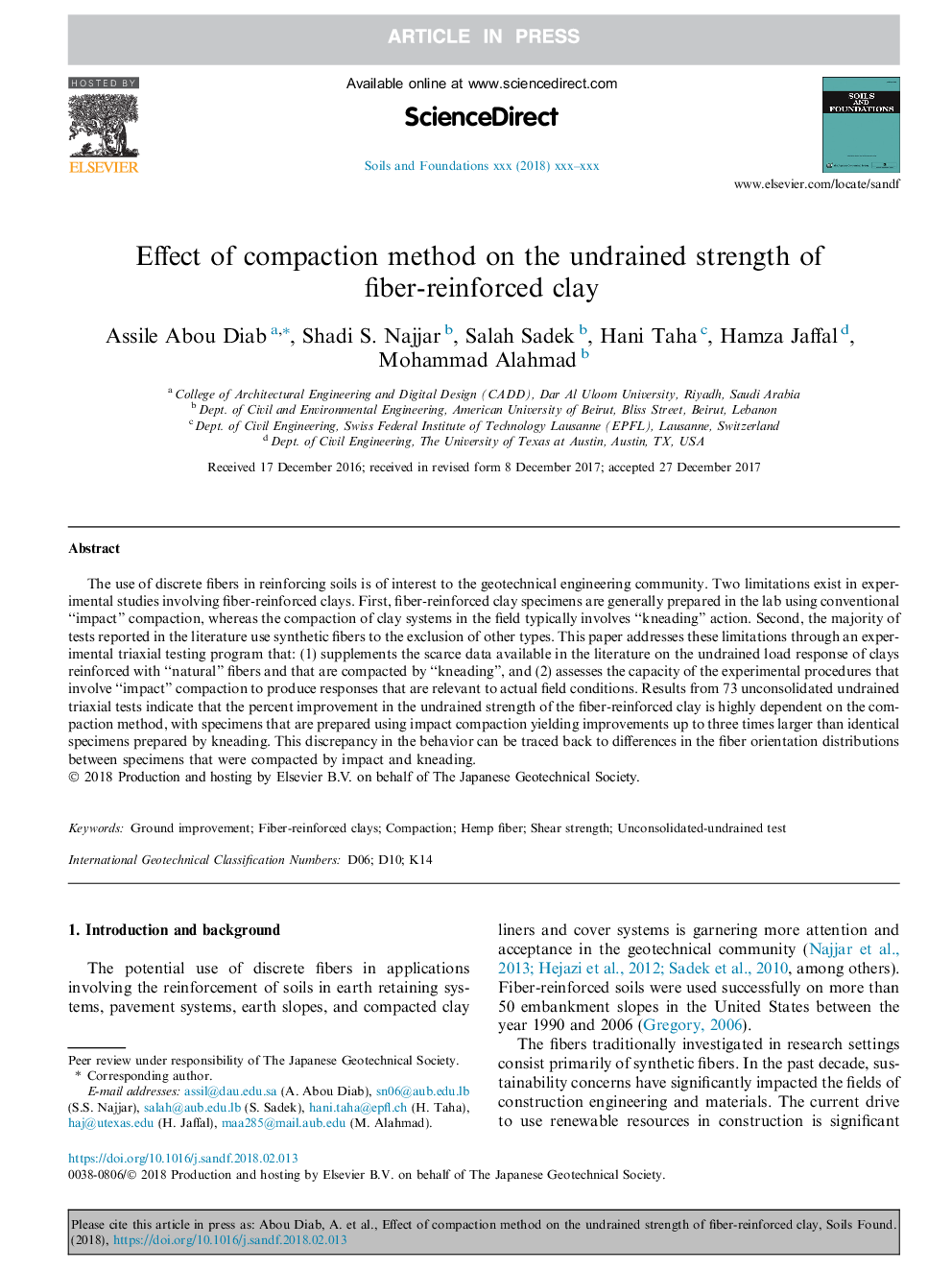| Article ID | Journal | Published Year | Pages | File Type |
|---|---|---|---|---|
| 6773826 | Soils and Foundations | 2018 | 19 Pages |
Abstract
The use of discrete fibers in reinforcing soils is of interest to the geotechnical engineering community. Two limitations exist in experimental studies involving fiber-reinforced clays. First, fiber-reinforced clay specimens are generally prepared in the lab using conventional “impact” compaction, whereas the compaction of clay systems in the field typically involves “kneading” action. Second, the majority of tests reported in the literature use synthetic fibers to the exclusion of other types. This paper addresses these limitations through an experimental triaxial testing program that: (1) supplements the scarce data available in the literature on the undrained load response of clays reinforced with “natural” fibers and that are compacted by “kneading”, and (2) assesses the capacity of the experimental procedures that involve “impact” compaction to produce responses that are relevant to actual field conditions. Results from 73 unconsolidated undrained triaxial tests indicate that the percent improvement in the undrained strength of the fiber-reinforced clay is highly dependent on the compaction method, with specimens that are prepared using impact compaction yielding improvements up to three times larger than identical specimens prepared by kneading. This discrepancy in the behavior can be traced back to differences in the fiber orientation distributions between specimens that were compacted by impact and kneading.
Related Topics
Physical Sciences and Engineering
Earth and Planetary Sciences
Geotechnical Engineering and Engineering Geology
Authors
Assile Abou Diab, Shadi S. Najjar, Salah Sadek, Hani Taha, Hamza Jaffal, Mohammad Alahmad,
